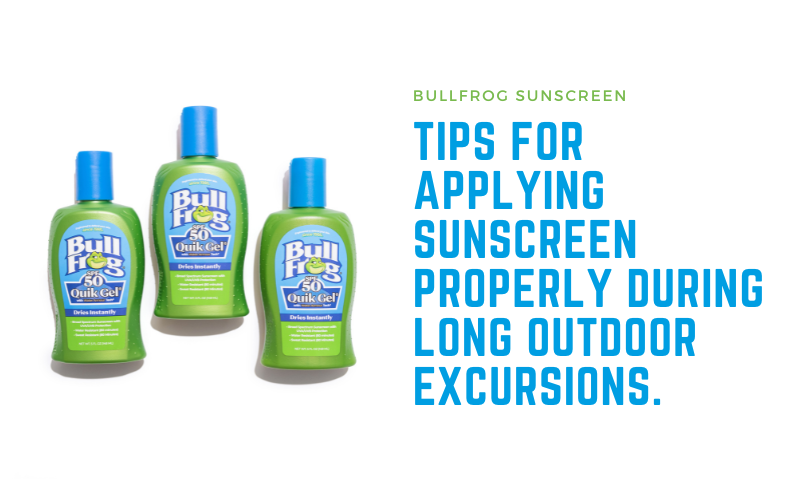
When it comes to protecting your skin from the sun's harmful rays, application is key. Whether you're spending a day at the beach, hiking through the mountains, or just enjoying a picnic in the park, applying long lasting sunscreen correctly can help prevent sunburn, skin cancer, and other forms of skin damage.
However, applying sunscreen can be a bit trickier than you might think. Here are some tips for ensuring that you're getting the most out of your sunscreen during long outdoor excursions:
1. Use enough sunscreen. Many people don't use enough sunscreen, which can significantly reduce its effectiveness. It's recommended that you use about one ounce (or a shot glass full) of sunscreen for every application. This may seem like a lot, but it's important to ensure that you're applying a thick, even layer to all exposed areas of your skin.
2. Reapply frequently. Sunscreen doesn't last forever, especially when you're spending a lot of time outdoors. The American Academy of Dermatology recommends that you reapply sunscreen every two hours, or immediately after swimming or sweating. Consider using a spray sunscreen, like Bullfrog Quik Spray Sunscreen, for maximum convenience while you reapply on the go.

3. Don't skimp on the ears, neck, and feet. These areas are often overlooked when it comes to sunscreen application, but they're just as susceptible to sunburn and skin damage as the rest of your body. Be sure to apply sunscreen to your ears, neck, and the tops of your feet to ensure full protection.
4. Pay attention to the expiration date. Sunscreen does expire and using expired sunscreen can be less effective at protecting your skin. Check the expiration date on your sunscreen and be sure to toss it if it's past its prime.
5. Choose the right SPF. Sunscreen is rated by its SPF (sun protection factor), which indicates how well it protects against UVB rays (the type of radiation that causes sunburn). The higher the SPF, the more protection it provides. It's generally recommended that you use an SPF of at least 30, but if you have sensitive skin or will be spending a lot of time outdoors, you may want to opt for an SPF of 50 or higher. Bullfrog’s sunscreen line is SPF 50, to ensure the highest protection for you and your family.
6. Use a broad-spectrum sunscreen. In addition to UVB rays, the sun also emits UVA rays, which can penetrate the skin more deeply and cause aging and other forms of skin damage. To protect against both types of rays, it's important to use a broad-spectrum sunscreen that provides protection against both UVA and UVB radiation.
7. Apply sunscreen to dry skin. Sunscreen is most effective when applied to dry skin, so try to apply it before you get dressed or put on your swimsuit. This will also help prevent your clothing from getting stained with sunscreen.
8. Consider using a spray or gel sunscreen. If you have a hard time getting your sunscreen to rub in evenly, or if you're applying it to hard-to-reach areas, you may want to try using a spray sunscreen. Just be sure to hold the can about six inches away from your skin and apply it evenly to avoid missed spots. Gel sunscreen is ideal for fast drying absorbency for on-the-go moments. With gel sunscreen, you don’t need to rub it in too much, just one or two passes as you’re all set!

Keep in mind that sunscreen isn't the only defense against the sun. While sunscreen is an important part of protecting your skin from the sun, there’s more you can do to make sure you stay safe. Here are a few additional tips to help protect you all year round:
1. Wear protective clothing: In addition to applying sunscreen, it's a good idea to wear protective clothing such as hats, sunglasses, and long-sleeved shirts to shield your skin from the sun's rays. Look for clothing with UPF (ultraviolet protection factor) ratings, which indicate how well the fabric blocks UV radiation.
2. Seek shade: The sun is strongest between the hours of 10 a.m. and 4 p.m., so try to seek shade during these times. This can be especially important for children and people with sensitive skin.
3. Drink plenty of water: Staying hydrated is important for maintaining your overall health, and it can also help protect your skin from the sun. Drink plenty of water, especially if you're spending a lot of time outdoors or engaging in physical activity.
4. Use additional protection: If you're going to be spending an extended period of time in the sun, consider using additional protection such as sun umbrellas or tents. These can provide an additional layer of shade to help protect your skin.
By following these tips for proper sunscreen application, you can help protect your skin from the sun's harmful rays and enjoy your outdoor activities with confidence. Remember, it's never too late to start taking care of your skin, so be sure to make Bullfrog sunscreen a regular part of your skincare routine.
